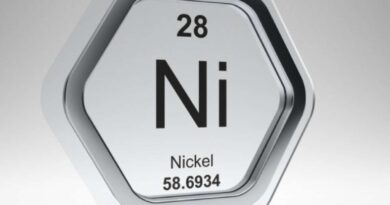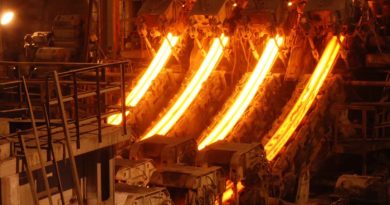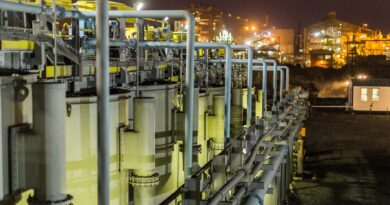Steel Heat Treatment: Tempering Steel Alloys
Tempering is a heat treatment process by which steels (and other metals) are given more beneficial properties, usually involving the strengthening of the material. When steel undergoes other heat treatment processes, the heating and rapid cooling (quenching) associated with them can cause the material to become brittle. Tempering solves this issue by reintroducing some strength back into the component to match the increase in hardness due to previous heat treatment, such as carbonitriding.
The most common steel is an alloy of iron and carbon, but there are other steel alloys which each include additional alloying elements and have their own unique properties. These alloying elements include chromium (for stainless steels) manganese, nickel, silicon, aluminum, cobalt, molybdenum, and vanadium. Depending on the exact steel alloy in question, tempering is performed to achieve different properties and using slightly different methods.
Steel Alloy Tempering Process
Atmosphere: Steel alloys are tempered in either a vacuum or inert gas atmosphere. This serves to protect the steel against oxidation.
Heat Treatment: When steel alloys are tempered, they are treated at heats below the melting point of steel: 2,500°F (1371°C). The exact temperature at which they are treated varies depending on the particular alloy. Some alloys reach their peak strength at temperatures closer to the melting point, and others farther from it. However, once this peak is passed, strength will generally begin to decline.
Once the steel is at temperature, it is held there for a set amount of time. Again, the time for which the steel is held at temperature depends on the type of steel alloy and the desired properties.
Quenching: As tempering is a process which fixes the brittleness associated with rapid quenching, the steel is typically allowed to cool at a slower, predetermined rate. While heating and rapid quenching can increase the hardness of steel, it reduces the strength. Slower cooling will allow for the molecules within the metal to realign in a stronger structure. However, extremely long cooling times are associated with sintering, another heat treatment method which improves ductility and electric conductivity.
Benefits of Tempering Steel Alloys
Strength vs. Hardness: Tempering is used so that steel alloys can reach the perfect middle ground between strength and hardness. As previously mentioned, steel can be hardened by earlier heat treatments, but this also causes it to become brittle. Tempering will retain (or improve, depending on the alloying elements) the hardness of the steel while reducing the brittleness.
The strength of a material refers to its ability to withstand breakage when under stress. More elastic materials generally have higher strength, but lower hardness. This means when pressure is exerted on them, they tend to bend rather than break.
Hardness is the opposite of strength, although the two still often go hand in hand as desired properties. It refers to a material’s ability to withstand deformation when under stress. More stiff materials generally have higher hardness, but lower strength. This means they tend to break rather than bend when pressure is exerted on them.
In some situations it’s better to have a material with high strength, and in others it’s better to have a material with high hardness. But there are many situations in which having both is ideal.
Wear Resistance: Surface wear can compromise both material strength and hardness, which is why wear resistance is an important property to have. The good news about wear resistance is that it usually scales up with hardness. So if your material has already been hardened by prior heat treatment, it probably has some additional wear resistance too. However, depending on the steel alloy involved, wear resistance can be enhanced by the tempering process as well.
Tempered Steel Alloy Part Applications
Tempered steel alloy parts are used for applications in which high stresses occur, or there is the constant threat of surface wear. This includes high-stress manufacturing machinery, various automobile industry applications, and parts such as keys, gears, and nuts & bolts.
High-stress manufacturing machinery and gears are often in use for long periods of time with continuous and repeated stresses applied to them. And because of their constant motion, they are susceptible to surface wear at a higher rate than most other parts. The reason these parts need to be tempered is because they would otherwise require replacement too often. Part replacement not only costs money, but also causes expensive downtime.
Automobile parts, keys, and nuts & bolts are tempered for a different reason. Rather than excessive wear being an issue (although it still can be) the main reason to temper these items is to increase their effectiveness. If your key bent or snapped when you went to unlock a door, that would obviously be a problem. Nuts & bolts distorting or breaking under pressure would not only be a cause of frustration, but could be extremely dangerous depending on their application. And likewise, automotive pieces need to be manufactured so that they don’t suddenly succumb to the forces they are placed under while you are driving.
Conclusion
Steel alloys are types of steel which have had their properties enhanced through the addition of other elements, known as alloying elements. Depending on the elements alloyed with the steel, different beneficial properties can be obtained. Tempering is a heat treatment process which serves to further increase the beneficial properties of such alloys, specifically by increasing strength. It is typically used after other heat treatment processes which increase hardness, but cause the metal to become brittle. This heat treatment is extremely important for the manufacturing of parts which need to resist constant or repeated high-stresses.




